Business Books to Watch in May
May 02, 2018
In order of their release dates, these are just some of the books we're hoping to get to know better in May.
In order of their release dates, these are just some of the books we're hoping to get to know better in May.
 Rebel Talent: Why It Pays to Break the Rules at Work and in Life by Francesca Gino, Dey Street
Rebel Talent: Why It Pays to Break the Rules at Work and in Life by Francesca Gino, Dey Street
Award-winning Harvard Business School professor Francesca Gino shows us why creative rebellion is essential at work and in life, and why the most successful among us are those who break the rules
On the first day of a new job or at the start of a new relationship, we feel energized and excited. Yet this euphoria doesn’t last. Why? Because of conformity, Francesca Gino contends. From an early age, we are taught to follow the rules, and the pressure to fit in only increases as we age. But going along to get along comes at a steep price for our careers and personal lives. When we conform to well-accepted rules and norms rather than constructively rebel against them, we keep our doubts and disagreements to ourselves and ultimately become less happy and less successful. As leaders, we are less effective and respected. As employees, we feel dissatisfied and are more likely to be overlooked for top assignments and promotions. As partners or friends, we are checked out and unhappy.
Gino has been studying how rebels can be successful in life and in the workplace for more than fifteen years. She has discovered that conformity has crippling effects and that sheep are easier to herd than wolves. But while rebels—those who practice “positive deviance” at work—may seem harder to manage, they are good for the bottom line: their passion, drive, curiosity, and creativity raise the entire organization to a new level. In personal relationships, rebels foster smooth sailing rather than fights against turbulent seas.
Rebel Talent provides strategies and examples for cultivating and embracing nonconformity in the workplace and in life, and offers illuminating case studies ranging from The World’s Best Restaurant to fast food chains to corporations such as Google and Pixar. Gino encourages all of us to rebel and question the status quo so we can thrive.
 Friend of a Friend . . .: Understanding the Hidden Networks That Can Transform Your Life and Your Career by David Burkus, Houghton Mifflin Harcourt
Friend of a Friend . . .: Understanding the Hidden Networks That Can Transform Your Life and Your Career by David Burkus, Houghton Mifflin Harcourt
Handing out business cards? Or just joining LinkedIn? Not anymore. This is a new and startling look at the art and science of networking.
Everybody knows that in order to expand your business opportunities, it’s essential to reach out and build your network. But did you know that it’s your secondary, or dormant, contacts who will be the most helpful to you? Or that too many of us inadvertently run the risk of isolating ourselves into corporate silos? And what do the very best networkers do that most of us do not?
Business school professor David Burkus digs deep to find the unexpected networking secrets that provide both a unique and science-based explanation on how best to grow your universe.
Based upon entertaining case studies and research, this is the most up-to-date, practical, and revelatory guide for building one’s professional and personal connections in today’s fast-paced world. Forget the outdated advice in all the other networking books and learn how to make use of the hidden networks you already have.
 The Meaning Revolution: The Power of Transcendent Leadership by Fred Kofman, Currency
The Meaning Revolution: The Power of Transcendent Leadership by Fred Kofman, Currency
The vice president of leadership at LinkedIn claims that the biggest driver of motivation is the chance to serve a larger purpose beyond our careers and ourselves, rather than salary, benefits, bonuses, or other material incentives; companies that are able to successfully focus their people, their teams, and their culture around meaning outperform their competition.
Fred Kofman’s approach to leadership has little to do with the standard practices taught in business school and traditional books. Bringing together economics and business theory, communications and conflict resolution, family counseling and mindfulness mediation, Kofman argues in The Meaning Revolution that our most deep-seated, unspoken, and universal anxiety stems from our fear that our life is being wasted—that the end of life will overtake us when our song is still unsung. Material incentives—salary and benefits—account for perhaps 15 percent of employees’ motivation at work. The other 85 percent is driven by a need to belong, a feeling that what we do day in and day out makes a difference, that how we spend our time on earth serves a larger purpose beyond just ourselves.
Kofman claims that transcendental leaders, wherever they are in the hierarchy, are able to put aside their self-interests and help others to feel connected with others on a team or in an organization on a great mission and part of an ennobling purpose. He argues that every organization involved in work that is nonviolent and non addictive has what he calls an “immortality project” at its core. And the challenge for leaders is to identify and expand on that core, to inspire all stakeholders to take part.
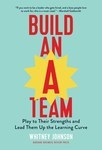 Build an A-Team: Play to Their Strengths and Lead Them Up the Learning Curve by Whitney Johnson, Harvard Business Review Press
Build an A-Team: Play to Their Strengths and Lead Them Up the Learning Curve by Whitney Johnson, Harvard Business Review Press
What's the secret to having an engaged and productive team? It's having a plan for developing all employees—no matter where they are on their personal learning curves.
Better morale and higher performance happen through learning, argues Whitney Johnson. In over twenty years of coaching, investing, and consulting, Johnson has seen that employees need continuous learning and fresh challenges to stay motivated.
The best bosses know this, and they know how to make it happen by thoughtfully designing people’s jobs around the skills they have today as well as the skills they'll need to be even more valuable tomorrow. That's how entire organizations stay competitive in an unpredictable, rapidly changing business environment.
In this book, Johnson explains how to become one of those bosses and how to build your A-team by:
- Identifying what your employees already know and what they need to learn
- Designing their jobs to maximize engagement and learning
- Applying a seven-step process for leading each person up their learning curve
We all want opportunities to learn, experiment, and grow in our jobs. When our bosses work with us to help us leap to new challenges, the result is a team that knows how to thrive, no matter what the future holds.
 Ask a Manager: How to Navigate Clueless Colleagues, Lunch-Stealing Bosses, and the Rest of Your Life at Work by Alison Green, Ballantine Books
Ask a Manager: How to Navigate Clueless Colleagues, Lunch-Stealing Bosses, and the Rest of Your Life at Work by Alison Green, Ballantine Books
A witty, practical guide to navigating 200 difficult professional conversations, from the host of the popular website Ask A Manager, and New York magazine’s work advice columnist.
There’s a reason Alison Green has been dubbed the “Dear Abby of the work world.” Ten years as a workplace advice columnist taught her that people avoid awkward conversations in the office because they can’t find the right words. Here, she takes on the tough conversations you might need to have during your career and gives you the wording to do it. You’ll learn what to say when:
- your coworker keeps pushing her work on you
- your new job is very different than what you agreed to
- your boss seems unhappy with your work
- your boss keeps stealing your lunch
- you catch an employee in a lie
- colleagues keep making judgmental comments about your diet
- your coworker’s loud speaker phone calls are making you homicidal
- and plenty more difficult or awkward situations you might find yourself in!
With sharp, sage, all-new advice and letters from real-life readers, this guide will help you navigate the stormy seas of office politics.
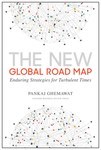 The New Global Road Map: Enduring Strategies for Turbulent Times by Pankaj Ghemawat, Harvard Business Review Press
The New Global Road Map: Enduring Strategies for Turbulent Times by Pankaj Ghemawat, Harvard Business Review Press
What Globalization Now Means for Your Business.
Executives can no longer base their strategies on the assumption that globalization will continue to advance steadily. But how should they respond to the growing pressures against globalization? And what can businesses do to control their destinies in these times of uncertainty?
In The New Global Road Map, Pankaj Ghemawat separates fact from fiction by giving readers a better understanding of the key trends affecting global business. He also explains how globalization levels around the world are changing, and where they are likely to go in the future. Using the most up-to-date data and analysis, Ghemawat dispels today's most dangerous myths and provides a clear view of the most critical issues facing policy makers in the years ahead.
Building on this analysis, with examples from a diverse set of companies across industries and geographies, Ghemawat provides actionable frameworks and tools to help executives revise their strategies, restructure their global footprints, realign their organizations, and rethink how they work with local governments and institutions.
In our era of rising nationalism and increased skepticism about globalization's benefits, The New Global Road Map delivers the definitive guide on how to compete profitably across borders.
 Born to Build by Jim Clifton & Sangeeta Badal, Gallup Press
Born to Build by Jim Clifton & Sangeeta Badal, Gallup Press
People will ask you throughout your life, “Where do you work?” and “What do you do?” They never ask you, “What are you building?”
When conversations change to “What are you building?” the world will change.
Written for anyone trying to figure out how to make the most of their lives, Born to Build seeks to inspire entrepreneurs and ambitious, self-motivated people to build something that will change the world. A builder’s venture could be a small business that grows into a mammoth enterprise, a thriving new division in an existing company, a nonprofit, a social enterprise, a church, a school—anything that creates economic growth and makes a lasting impact on society.
Born to Build is written by Gallup Chairman and CEO Jim Clifton and Sangeeta Badal, Ph.D., Principal Scientist for Gallup’s Entrepreneurship and Job Creation initiative, and is grounded in years of research. This book goes beyond the conventional economics-based business training and instead offers a uniquely psychological approach to venture building. It gives readers the tools and techniques they need to understand who they are, what motivates them and what they can build—and how. By following the practical steps in Born to Build, readers will have the tools to build a sustainable and profitable venture of any size from scratch.
Central to the book is a code that allows readers to take Gallup’s Builder Profile 10 (BP10) assessment, which identifies their innate talents and motivations and shows them how to make the most of their talents to build a successful enterprise.
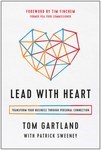 Lead with Heart: Transform Your Business Through Personal Connection by Tom Gartland, with Patrick Sweeney, BenBella Books
Lead with Heart: Transform Your Business Through Personal Connection by Tom Gartland, with Patrick Sweeney, BenBella Books
If you want your company to thrive, you need to break one of the oldest unwritten rules of leadership.
Leaders in nearly every industry have learned to keep a professional “distance” between themselves and the people who report to them—to avoid getting too close or too personal. This unwritten rule of leadership is pervasive and quietly destructive, and, little by little, keeping ourselves at arm’s length destroys trust, collaboration, and the very fabric of organizations.
When Tom Gartland became president of Avis Budget Group, North America, he wanted the corporate culture to become more "open and connected"—so he started with himself. His message was "business is personal—very personal." As he grew closer and connected more with those he was leading, he became a more effective leader, and those around him were inspired to create unprecedented results.
Tom found that when we truly open up and care about the people we work with, we can transform organizations into sanctuaries where people feel a deep connection to one another, a profound sense of being part of an important mission, and extraordinary engagement in their work. The result? Employees who feel valued generate exceptional profits. After applying this business philosophy at Avis, not only did Tom see an increase in employee morale, he also saw a significant increase in the company's bottom line.
In Lead with Heart, Tom provides an unconventional approach to business leadership, including advice and strategies on how to open yourself up as a leader, recognize potential in your employees, and increase employees' trust in you and the company. Lead with Heart is the revolutionary leadership book that will help managers and employees at all levels grow their businesses by connecting, honestly and meaningfully, with the people they lead.
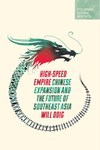 High-Speed Empire: Chinese Expansion and the Future of Southeast Asia by Will Doig, Columbia Global Reports
High-Speed Empire: Chinese Expansion and the Future of Southeast Asia by Will Doig, Columbia Global Reports
The story of the world's most audacious infrastructure project.
Less than a decade ago, China did not have a single high-speed train in service. Today, it owns a network of 14,000 miles of high-speed rail, far more than the rest of the world combined. Now, China is pushing its tracks into Southeast Asia, reviving a century-old colonial fantasy of an imperial railroad stretching to Singapore; and kicking off a key piece of the One Belt One Road initiative, which has a price tag of $1 trillion and, reaches inside the borders of more than 60 countries.
The Pan-Asia Railway portion of One Belt One Road could transform Southeast Asia, bringing shiny Chinese cities, entire economies, and waves of migrants where none existed before. But if it doesn't succeed, that would be a cautionary tale about whether a new superpower, with levels of global authority unimaginable just a decade ago, can pull entire regions into its orbit simply with tracks, sweat, and lots of money. Journalist Will Doig traveled to Laos, Thailand, Malaysia, and Singapore to chronicle the dramatic transformations taking place—and to find out whether ordinary people have a voice in this moment of economic, political, and cultural collision.
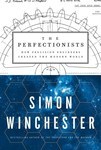 The Perfectionists: How Precision Engineers Created the Modern World by Simon Winchester, Harper
The Perfectionists: How Precision Engineers Created the Modern World by Simon Winchester, Harper
The revered New York Times bestselling author traces the development of technology from the Industrial Age to the Digital Age to explore the single component crucial to advancement—precision—in a superb history that is both an homage and a warning for our future.
The rise of manufacturing could not have happened without an attention to precision. At the dawn of the Industrial Revolution in eighteenth-century England, standards of measurement were established, giving way to the development of machine tools—machines that make machines. Eventually, the application of precision tools and methods resulted in the creation and mass production of items from guns and glass to mirrors, lenses, and cameras—and eventually gave way to further breakthroughs, including gene splicing, microchips, and the Hadron Collider.
Simon Winchester takes us back to origins of the Industrial Age, to England where he introduces the scientific minds that helped usher in modern production: John Wilkinson, Henry Maudslay, Joseph Bramah, Jesse Ramsden, and Joseph Whitworth. It was Thomas Jefferson who later exported their discoveries to the fledgling United States, setting the nation on its course to become a manufacturing titan. Winchester moves forward through time, to today’s cutting-edge developments occurring around the world, from America to Western Europe to Asia.
As he introduces the minds and methods that have changed the modern world, Winchester explores fundamental questions. Why is precision important? What are the different tools we use to measure it? Who has invented and perfected it? Has the pursuit of the ultra-precise in so many facets of human life blinded us to other things of equal value, such as an appreciation for the age-old traditions of craftsmanship, art, and high culture? Are we missing something that reflects the world as it is, rather than the world as we think we would wish it to be? And can the precise and the natural co-exist in society?
 Would You Do That to Your Mother?: The "Make Mom Proud" Standard for How to Treat Your Customers by Jeanne Bliss, Portfolio
Would You Do That to Your Mother?: The "Make Mom Proud" Standard for How to Treat Your Customers by Jeanne Bliss, Portfolio
How would your company act if every customer were your mom?
How do we cut through the rigmarole of business to give customers the treatment they desire, and employees the ability to deliver it? Customer experience expert Jeanne Bliss recommends making business personal to get the traction you need by focusing on one deceptively simple question: “Would you do that to your mother?”
Picture your mom struggling through an 800 number menu for assistance, deciphering the terms of her phone contract, or waiting hours for a doctor’s appointment. Imagine her joy when she finally reaches someone to discuss her warranty claim, and then her frustration when her claim is turned down three days out of warranty.
Bliss shows how to turn “gotcha” moments into “we’ve got your back” moments by rethinking business practices, and by enabling employees to fix the frustrations that make customers feel like they’re sinking. The result is a playbook to help you #MakeMomProud.
Its 32 case studies offer lessons from some of the most impressive and inspiring leaders in their industries, as well as tools you can start applying immediately. For instance:
- Vail resorts, the world’s largest ski resort operator, banned the three words “Our policy is…” from their vocabulary, freeing employees to take spirited actions to deliver “the experience of a lifetime.”
- Virgin Hotels, named #1 U.S. hotel by Conde Nast Reader’s Choice Awards, walked away from price gouging at the mini bar, so you’ll never pay more for that Snickers bar than what you’d pay at the corner market.
- Canada’s Mayfair Diagnostics spent over a year studying the emotions of patients entering an imaging clinic, so they could redesign their welcome to deliver warmth and caring over procedure and process. The newly designed clinic achieved profitability in record time.
Whether you’re contemplating your company’s returns policy, its social media presence, or its big-picture strategy, this approach helps pinpoint causes of customer unrest and opportunities to deliver joy, so your company can anticipate needs, extend patience, and show respect at all times.
 Detonate: Why—And How—Corporations Must Blow Up Best Practices (and Bring a Beginner's Mind) To Survive by Geoff Tuff & Steven Goldbach, Wiley
Detonate: Why—And How—Corporations Must Blow Up Best Practices (and Bring a Beginner's Mind) To Survive by Geoff Tuff & Steven Goldbach, Wiley
Reinvent best practices that have become bad habits.
Without meaning to, and often with the best of intentions, most organizations continually waste precious time and money on processes and activities that don't create value and no longer make sense in today's business environment. Until now, the relatively slow speed of marketplace evolution has allowed wasteful habits to continue without consequence. This reality is ending.
Detonate explains how organizations built up bad habits, identifies which ones masquerade as "best practices," and suggests alternatives that can contribute to winning in the marketplace. With a focus on optimism and empowerment, it focuses on an approach and mindset which are critical to successfully compete in an era characterized by profound technological advances and uncertainty.
- Core themes challenge how you think about and approach problems
- Case studies illustrate the challenges you face and how to overcome them
- Recommendations are pragmatic and steer clear of suggesting a brand-new, complicated wiring diagram
- Actionable advice provides the first steps down an evolutionary path
If you want to compete differently in today’s marketplace and to challenge the things your company does which you have a nagging feeling are actually just a waste of time—and maybe value-destroying—Detonate gives you what you need to ignite change.
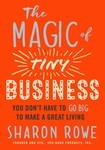 The Magic of Tiny Business: You Don't Have to Go Big to Make a Great Living by Sharon Rowe, Berrett-Koehler
The Magic of Tiny Business: You Don't Have to Go Big to Make a Great Living by Sharon Rowe, Berrett-Koehler
Too many of us feel trapped by work that keeps us from living our purpose.
We fantasize about starting our own business, yet we’re warned against falling into debt, working eighty hours a week, and coping with the pressure to grow. Eco-Bags Products founder Sharon Rowe says there’s another way: go tiny.
Like a tiny house, a tiny business is built on maintaining a laser focus on what is essential by living an intentional life. As an entrepreneur and mother, Rowe is most concerned with putting family first, maintaining financial security, and doing something that makes an impact in the world. Using the success story of Eco-Bags Products, Rowe distills the step-by-step process of building a profitable, right-scaled, sustainable venture that doesn’t compromise your values. She shows you how to test your concept, manage your money and priorities, and more, while staying true to the “tiny” ethos.
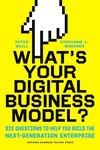 What's Your Digital Business Model?: Six Questions to Help You Build the Next-Generation Enterprise by Peter Weill & Stephanie Woerner, Harvard Business Review Press
What's Your Digital Business Model?: Six Questions to Help You Build the Next-Generation Enterprise by Peter Weill & Stephanie Woerner, Harvard Business Review Press
Digital transformation is not about technology—it's about change.
In the rapidly changing digital economy, you can't succeed by merely tweaking management practices that led to past success. And yet, while many leaders and managers recognize the threat from digital—and the potential opportunity—they lack a common language and compelling framework to help them assess it and guide them in responding. They don't know how to think about their digital business model.
In this concise, practical book, MIT digital research leaders Peter Weill and Stephanie Woerner provide a powerful yet straightforward framework that has been field-tested globally with dozens of senior management teams. Based on years of study at the MIT Center for Information Systems Research (CISR), the authors find that digitization is moving companies' business models on two dimensions: from value chains to digital ecosystems, and from a fuzzy understanding of the needs of end customers to a sharper one. Looking at these dimensions in combination results in four distinct business models, each with different capabilities. The book then sets out six driving questions, in separate chapters, that help managers and executives clarify where they are currently in an increasingly digital business landscape and highlight what's needed to move toward a higher-value digital business model.
Filled with straightforward self-assessments, motivating examples, and sharp financial analyses of where profits are made, this smart book will help you tackle the threats, leverage the opportunities, and create winning digital strategies.
 Bullshit Jobs: A Theory by David Graeber, Simon & Schuster
Bullshit Jobs: A Theory by David Graeber, Simon & Schuster
From bestselling writer David Graeber, a powerful argument against the rise of meaningless, unfulfilling jobs, and their consequences.
Does your job make a meaningful contribution to the world? In the spring of 2013, David Graeber asked this question in a playful, provocative essay titled “On the Phenomenon of Bullshit Jobs.” It went viral. After a million online views in seventeen different languages, people all over the world are still debating the answer.
There are millions of people—HR consultants, communication coordinators, telemarketing researchers, corporate lawyers—whose jobs are useless, and, tragically, they know it. These people are caught in bullshit jobs.
Graeber explores one of society’s most vexing and deeply felt concerns, indicting among other villains a particular strain of finance capitalism that betrays ideals shared by thinkers ranging from Keynes to Lincoln. Bullshit Jobs gives individuals, corporations, and societies permission to undergo a shift in values, placing creative and caring work at the center of our culture. This book is for everyone who wants to turn their vocation back into an avocation.
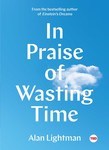 In Praise of Wasting Time by Alan Lightman, TED Books
In Praise of Wasting Time by Alan Lightman, TED Books
In this timely and essential book that offers a fresh take on the qualms of modern day life, Professor Alan Lightman investigates the creativity born from allowing our minds to freely roam, without attempting to accomplish anything and without any assigned tasks.
We are all worried about wasting time. Especially in the West, we have created a frenzied lifestyle in which the twenty-four hours of each day are carved up, dissected, and reduced down to ten minute units of efficiency. We take our iPhones and laptops with us on vacation. We check email at restaurants or our brokerage accounts while walking in the park. When the school day ends, our children are overloaded with “extras.” Our university curricula are so crammed our young people don’t have time to reflect on the material they are supposed to be learning. Yet in the face of our time-driven existence, a great deal of evidence suggests there is great value in “wasting time,” of letting the mind lie fallow for some periods, of letting minutes and even hours go by without scheduled activities or intended tasks.
Gustav Mahler routinely took three or four-hour walks after lunch, stopping to jot down ideas in his notebook. Carl Jung did his most creative thinking and writing when he visited his country house. In his 1949 autobiography, Albert Einstein described how his thinking involved letting his mind roam over many possibilities and making connections between concepts that were previously unconnected. With In Praise of Wasting Time, Professor Alan Lightman documents the rush and heave of the modern world, suggests the technological and cultural origins of our time-driven lives, and examines the many values of “wasting time”—for replenishing the mind, for creative thought, and for finding and solidifying the inner self. Break free from the idea that we must not waste a single second, and discover how sometimes the best thing to do is to do nothing at all.
 Next Is Now: 5 Steps for Embracing Change—Building a Business that Thrives into the Future by Lior Arussy, Simon & Schuster
Next Is Now: 5 Steps for Embracing Change—Building a Business that Thrives into the Future by Lior Arussy, Simon & Schuster
The old business model of adapting to change for continued success is dead.
Change is the new normal. There are no more periods of stability and predictability. There is only change. This continuous upheaval can undercut morale, decrease productivity and decimate profits, or it can be a game-changing opportunity.
Lior Arussy illuminates the path to opportunity. He helps corporate leaders and their employees view change as an opportunity to become invested, drive that change, and achieve more success and job satisfaction than if change were simply implemented from the top down.
Based on his experience working one-on-one with major corporate clients like Mercedes-Benz, Royal Caribbean Cruises, Thomson Reuters, HSBC and other Fortune 500 clients, Arussy shares his five-step Future Ready Impact program, and guides change impacted employees and business owners from a victim mentality to one of participation and ownership. As Stephen Cannon, the former president and CEO of Mercedes-Benz USA, raves, “For anyone interested in building a thriving business, Lior Arussy's insights provide actionable steps to integrate into your plans for achieving success.”
 The Art of Gathering: How We Meet and Why It Matters by Priya Parker, Riverhead Books
The Art of Gathering: How We Meet and Why It Matters by Priya Parker, Riverhead Books
A bold new approach to how we gather that will transform the ways we spend our time together—at work, at home, in our communities, and beyond.
In The Art of Gathering, Priya Parker argues that the gatherings in our lives are lackluster and unproductive—which they don’t have to be. We rely too much on routine and the conventions of gatherings when we should focus on distinctiveness and the people involved. At a time when coming together is more important than ever, Parker sets forth a human-centered approach to gathering that will help everyone create meaningful, memorable experiences, large and small, for work and for play.
Drawing on her expertise as a facilitator of high-powered gatherings around the world, Parker takes us inside events of all kinds to show what works, what doesn’t, and why. She investigates a wide array of gatherings—conferences, meetings, a courtroom, a flash-mob party, an Arab-Israeli summer camp—and explains how simple, specific changes can invigorate any group experience.
The result is a book that’s both journey and guide, full of exciting ideas with real-world applications. The Art of Gathering will forever alter the way you look at your next meeting, industry conference, dinner party, and backyard barbecue—and how you host and attend them.
 Never Lost Again: The Google Mapping Revolution That Sparked New Industries and Augmented Our Reality by Bill Kilday, Harper Business
Never Lost Again: The Google Mapping Revolution That Sparked New Industries and Augmented Our Reality by Bill Kilday, Harper Business
As enlightening as The Facebook Effect, Elon Musk, and Chaos Monkeys—the compelling, behind-the-scenes story of the creation of one of the most essential applications ever devised, and the rag-tag team that built it and changed how we navigate the world.
Never Lost Again chronicles the evolution of mapping technology—the “overnight success twenty years in the making.” Bill Kilday takes us behind the scenes of the tech’s development, and introduces to the team that gave us not only Google Maps but Google Earth, and most recently, Pokémon GO.
He takes us back to the beginning to Keyhole—a cash-strapped startup mapping company started by a small-town Texas boy named John Hanke, that nearly folded when the tech bubble burst. While a contract with the CIA kept them afloat, the company’s big break came with the first invasion of Iraq; CNN used their technology to cover the war and made it famous. Then Google came on the scene, buying the company and relaunching the software as Google Maps and Google Earth. Eventually, Hanke’s original company was spun back out of Google, and is now responsible for Pokémon GO.
Kilday, the marketing director for Keyhole and Google Maps, was there from the earliest days, and offers a personal look behind the scenes at the tech and the minds developing it. But this book isn’t only a look back at the past; it is also a glimpse of what’s to come. Kilday reveals how emerging technologies including virtual reality and driverless cars are going to upend our lives once again.
Never Lost Again is a tech insider’s look at how our worldview changed dramatically as a result of vision, imagination, and implementation. It’s a crazy story. And it all started with a really good map.
 Einstein's Boss: 10 Rules for Leading Genius by Robert Hromas, AMACOM
Einstein's Boss: 10 Rules for Leading Genius by Robert Hromas, AMACOM
When employees are exceptional, everyday rules no longer apply.
In 1933, Albert Einstein fled Nazi Germany for the leafy streets of Princeton, NJ. He would have been welcome anywhere, but Einstein joined the Institute for Advanced Study, bestowing instant credibility on the fledgling research center. Abraham Flexner, the institute's founder, wasn't a physicist or mathematician—but he was a gifted administrator. Under his leadership, IAS became a global powerhouse, home to 33 Nobel Laureates, 38 Field Medalists, and myriad winners of the Wolf and MacArthur prizes. The team of thinkers that Flexner assembled produced some of the greatest scientific advances of the 20th century. The man had a knack for leading genius.
Einstein's Boss filters Flexner's practices through the lens of modern business, where industries from computing to engineering to biotechnology compete for top talent and cutting-edge innovations. Original and insightful, the book explains how to spot the deep thinkers who will transform your business-and reveals 10 rules for guiding them to greatness, including:
- Get out of the way: Allow brilliant people ownership of their projects
- Shut up and listen: Consider their input openly before reaching conclusions
- Turn over the rocks: Be completely transparent-a genius will figure out what you're hiding anyway
- Practice alchemy: Mix complementary minds together for maximum effect
- Let the problem seduce: Frame challenges in a way that captures the imagination and draws them toward the goal
- Quit chasing squirrels: Guide innovation towards the core mission.
Leading people who are smarter than you is no easy task. But for managers who learn to channel brainpower into breakthroughs, the rewards are boundless.
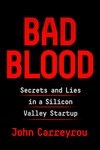 Bad Blood: Secrets and Lies in a Silicon Valley Startup by John Carreyrou, Knopf
Bad Blood: Secrets and Lies in a Silicon Valley Startup by John Carreyrou, Knopf
The full inside story of the breathtaking rise and shocking collapse of Theranos, the multibillion-dollar biotech startup, by the prize-winning journalist who first broke the story and pursued it to the end, despite pressure from its charismatic CEO and threats by her lawyers.
In 2014, Theranos founder and CEO Elizabeth Holmes was widely seen as the female Steve Jobs: a brilliant Stanford dropout whose startup “unicorn” promised to revolutionize the medical industry with a machine that would make blood testing significantly faster and easier. Backed by investors such as Larry Ellison and Tim Draper, Theranos sold shares in a fundraising round that valued the company at more than $9 billion, putting Holmes’s worth at an estimated $4.7 billion. There was just one problem: The technology didn’t work.
A riveting story of the biggest corporate fraud since Enron, a tale of ambition and hubris set amid the bold promises of Silicon Valley.
 Applied Empathy: The New Language of Leadership by Michael Ventura, Touchstone
Applied Empathy: The New Language of Leadership by Michael Ventura, Touchstone
Michael Ventura, entrepreneur and CEO of award-winning strategy and design practice Sub Rosa, shares how empathy—the ability to see the world through someone else’s eyes—could be what your business needs to innovate, connect, and grow.
Having built his career working with iconic brands and institutions such as General Electric, Google, Nike, Warby Parker, and also The United Nations and the Obama Administration, Michael Ventura offers entrepreneurs and executives a radical new business book and way forward.
Empathy is not about being nice. It’s not about pity or sympathy either. It’s about understanding—your consumers, your colleagues, and yourself—and it’s a direct path to powerful leadership. As such, Applied Empathy presents real strategies, based on Sub Rosa’s design work and the popular class Ventura and his team have taught at Princeton University, on how to make lasting connections and evolve your business internally (your employees, culture, and product/services) as well as externally (your brand, consumers, and value).
For leaders of all levels, this groundbreaking guide lays the foundation to establish a diverse, inventive, and driven team that can meet the challenges of today’s ever-evolving marketplace. If you want to connect to the people you work with and for, you first have to understand them.
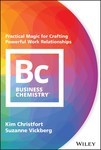 Business Chemistry: Practical Magic for Crafting Powerful Work Relationships by Kim Christfort & Suzanne Vickberg, Wiley
Business Chemistry: Practical Magic for Crafting Powerful Work Relationships by Kim Christfort & Suzanne Vickberg, Wiley
A guide to putting cognitive diversity to work.
Ever wonder what it is that makes two people click or clash? Or why some groups excel while others fumble? Or how you, as a leader, can make or break team potential?
Business Chemistry holds the answers. Based on extensive research and analytics, plus years of proven success in the field, the Business Chemistry framework provides a simple yet powerful way to identify meaningful differences between people’s working styles. Who seeks possibilities and who seeks stability? Who values challenge and who values connection? Business Chemistry will help you grasp where others are coming from, appreciate the value they bring, and determine what they need in order to excel. It offers practical ways to be more effective as an individual and as a leader.
Imagine you had a more in-depth understanding of yourself and why you thrive in some work environments and flounder in others. Suppose you had a clearer view on what to do about it so that you could always perform at your best.
Imagine you had more insight into what makes people tick and what ticks them off, how some interactions unlock potential while others shut people down. Suppose you could gain people’s trust, influence them, motivate them, and get the very most out of your work relationships.
Imagine you knew how to create a work environment where all types of people excel, even if they have conflicting perspectives, preferences and needs. Suppose you could activate the potential benefits of diversity on your teams and in your organizations, improving collaboration to achieve the group’s collective potential.
Business Chemistry offers all of this—you don’t have to leave it up to chance, and you shouldn’t. Let this book guide you in creating great chemistry!
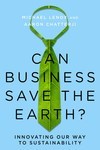 Can Business Save the Earth?: Innovating Our Way to Sustainability by Michael Lenox & Aaron Chatterji, Stanford Business Books
Can Business Save the Earth?: Innovating Our Way to Sustainability by Michael Lenox & Aaron Chatterji, Stanford Business Books
The only way business can save the earth and set us on a path to sustainability is if we can harness the power of an entire system of inventors, companies, investors, government, activists, and customers. Taking a systemic perspective that goes beyond the typical dichotomy of business and government, the authors outline how each type of player can help us to address the current environmental crisis.
Increasingly, business leaders are tasked with developing new products, services, and business models that minimize environmental impact while driving economic growth. It's a tall order—and a call that is only getting louder.
In Can Business Save the Earth?, Michael Lenox and Aaron Chatterji explain just how the private sector can help. Many believe that markets will inevitably demand sustainable practices and force them to emerge. But Lenox and Chatterji see it differently. Based on more than a decade of research and work with companies, they argue that a bright green future is only possible with dramatic innovation across multiple sectors at the same time.
To achieve this, a broader ecosystem of players—including inventors, executives, customers, investors, activists, and governments—all must play a role. The book outlines how and the extent to which each group can serve as a driver of green growth. Then, Lenox and Chatterji identify where economic incentives currently exist, or could exist with institutional change, and ultimately address the larger question of how far well-coordinated efforts can take us in addressing the current environmental crisis.
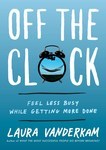 Off the Clock: Feel Less Busy While Getting More Done by Laura Vanderkam, Portfolio
Off the Clock: Feel Less Busy While Getting More Done by Laura Vanderkam, Portfolio
Learn to savor life’s best moments—no matter how busy you are—through mindset shifts that alter your perception of time.
Laura Vanderkam, the acclaimed author of What the Most Successful People Do Before Breakfast, isn’t like other time-management gurus. She’s not trying to shave off 30 seconds here or there; she’s interested in the emotional and psychological side of the 168 hours everyone has each week. Her core message is that you have more time than you think you do, and you can feel less stressed while getting more done.
With the right habits, you can live efficiently and effectively, and yet still see time as abundant. For instance, Vanderkam teaches:
- How to clear your calendar of activities that are boring, stressful—or just not the best use of your time.
- Why tackling your top priorities during the hours when you have the most energy will change your perception of what it means to be productive.
- How to linger in great experiences while they’re happening, and why good memories seem to make time expand.
Vanderkam has packed this book with insights from busy yet relaxed professionals, including “time makeovers” of people who are learning how to use these tools. Off the Clock can inspire the rest of us to create lives that are not only productive, but enjoyable in the moment.












